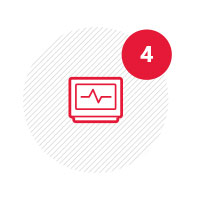4 Considerations for Secure Texting in Healthcare
Mobile devices have become ubiquitous in all walks of society, and the healthcare industry is no exception. Clinicians increasingly take advantage of secure text messaging (STM) technology to improve communication with each other and their patients.
Healthcare organizations now have several provider services and programs they can use to address this growing demand; however, before choosing and implementing a system, an organization would be wise to keep the following tips in mind:
SIGN UP: Get more news from the HealthTech newsletter in your inbox every two weeks
 Determine a Target Audience
Determine a Target Audience
Before signing an agreement, assigning licenses or rolling out a secure texting solution, be sure to clarify who will use the system to send and receive messages. Work with clinical leadership to establish whether communication will primarily take place between clinicians, or will occur between patients and clinicians.
Once you know the audience, determine what the workflow will entail and the intended use of the solution.
 Educate Users on Possible Barriers
Educate Users on Possible Barriers
STM users may take the technology’s functionality for granted and should be briefed on potential challenges. For starters, STM relies on local carriers to relay messages at various speeds throughout the day.
Successful transmission requires that recipient devices be fully charged and within range of a signal. Additionally, overuse of STM can lead to user fatigue. Make sure that users understand how to address potential hurdles.
 Set an Internal Use Policy
Set an Internal Use Policy
Set clear policies around the workflow and intent of STM use. Focus on proper utilization, and address whether content will be placed in the medical record. If so, how will that occur? The Joint Commission states that healthcare organizations must not use STM to place orders. What’s more, it requires that hospitals develop a specific policy prohibiting the use of STM for such purposes.
 Are you Seeing ROI?
Are you Seeing ROI?
Ensure a solid return on your investment by measuring the number of messages sent and received, time between transmissions and first reads, time between transmissions and responses, and whether messages are incorporated in the patient’s electronic health record.









